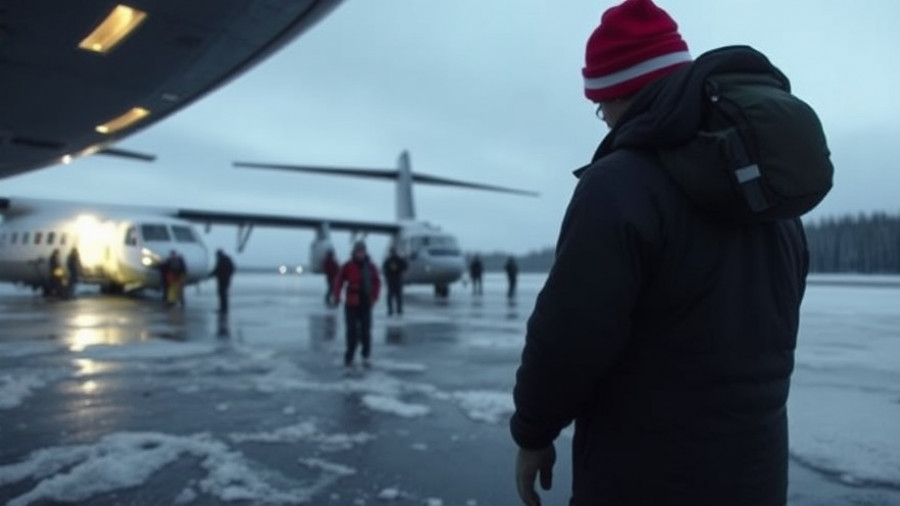
Typhoon Halong's Wreaks Havoc on Alaskan Villages
The recent remnants of Typhoon Halong have led to one of the most significant humanitarian efforts in Alaska's recent history. As fierce winds and record-breaking storm surges hit the coastal regions, entire communities faced devastation. With over 1,500 residents displaced, authorities, including the Alaska National Guard, initiated emergency evacuations to relocate survivors from the worst-hit villages of Kipnuk and Kwigillingok.
Historic Evacuations Unfold
On October 15, 2025, a joint operation involving helicopters and military transport planes, including a C-17 Globemaster III, undertook the airlifting of approximately 300 people to Anchorage. This operation comes as schools and shelters in the impacted areas reach critical capacity. Residents, who had previously sought refuge, are now faced with conditions lacking basic necessities and fear the onset of more severe weather.
Conditions on the Ground
The on-ground reality in affected communities is dire. Buggy Carl, a tribal administrator from Kipnuk, noted that many individuals are hesitant to leave their homes. Despite local officials' insistence on evacuating for safety, a sense of despair looms as families must abandon pets and personal belongings. "They are crying and scared—they don't want to leave," Carl expressed in a heartfelt update.
The Role of the Red Cross and Other Organizations
The American Red Cross is actively aiding evacuees, providing shelter, food, and emotional support. Multiple disaster workers from around the nation have mobilized to offer help as local communities recover from unimaginable loss. With at least one confirmed death and further missing persons, the need for immediate aid is critical. The organization is also preparing to meet the needs of those who will be displaced for an extended period as winter looms.
Economic and Infrastructure Challenges
Alaska's vulnerability to climate change is exacerbated by recent federal cuts to disaster preparedness funding. The termination of a $20 million grant aimed at helping Indigenous villages bolster their defenses against extreme weather has sparked concerns about the ability to cope with future disasters. As areas remain inaccessible, damage to infrastructure like roads and communications adds another layer of difficulty for rescue and recovery efforts.
A Call for Community Resilience
The struggles faced by individuals and families have raised vital questions about the importance of resilience in the face of climate change. As communities reassess their emergency preparedness strategies, lessons learned from this disaster could help foster a more robust response to future challenges. Local leaders and organizations urge support and funding to improve infrastructure and disaster response capabilities.
How You Can Help
As members of the larger community, we can extend our support through donations or volunteering with organizations like the American Red Cross. During times of crisis, every bit of help goes a long way in supporting families who have lost everything. Contributing funds directly to disaster relief efforts can ensure timely assistance to those affected.
More details can be found through local channels, and residents are encouraged to visit the Red Cross website for options to assist directly in recovery efforts. Remember, together we can work towards rebuilding and recovery.
 Add Row
Add Row  Add
Add 





Write A Comment